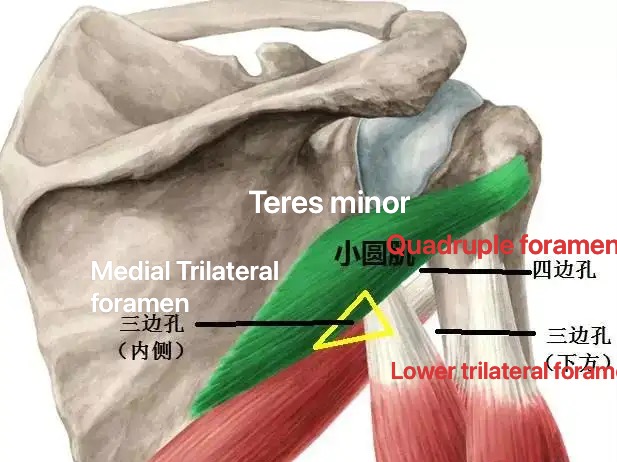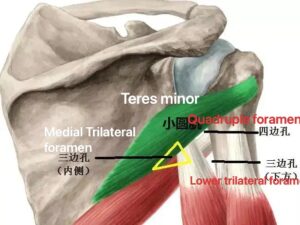
[Dr Win Huang’s Clinical Case Record] Right Shoulder Pain and Weakness for Over 2 Years Numerous Treatments and Tests Without Results, Unable to Exercise Dr. Huang’s Traditional Chinese Medicine Clinic
Two years ago, the patient injured his right shoulder while working out. He underwent physiotherapy, chiropractic adjustments, and saw specialists, but none of these treatments led to improvement. Despite taking medication and undergoing rehabilitation exercises, the discomfort persisted. The patient reported a general sense of “something wrong” with the shoulder, with more severe discomfort in the morning and mild pain at night. He experienced sharp pain in the front of the shoulder when lifting his child into the car seat, and also when extending his arm backward. As a fitness enthusiast, the ongoing shoulder pain forced him to stop exercising. On the recommendation of a friend, he sought acupuncture treatment at my clinic.
Key Points from the Patient’s History:
- The shoulder pain is not very severe but involves general discomfort.
- The pain is mostly concentrated in the front of the shoulder during certain movements.
- Multiple treatments (physiotherapy, chiropractic, and specialist visits) have all been ineffective.
- Various diagnostic tests (ultrasound, MRI, X-ray) have shown no abnormalities.
Although the pain is not particularly intense, the chronic shoulder discomfort has been present for over two years, affecting the patient’s daily life. Despite seeing numerous doctors and undergoing various tests, there has been no clear diagnosis or improvement. Therefore, I decided to rule out possible nerve-related causes for the shoulder pain, such as scapulothoracic nerve pain, axillary nerve pain, or thoracic outlet syndrome. During my examination, there were no abnormalities in the patient’s upper limb sensation, reflexes, or muscle strength, which helped rule out nerve issues.
Key Points from the Examination:
- The most noticeable tenderness is at the front of the shoulder, especially over the shoulder’s anterior acromion.
- Severe tenderness is present when palpating the lower edge of the scapula near the axilla, with referred pain to the back of the upper arm.
- The Lift-off test is negative.
- The patient’s forward shoulder pain worsens during backward arm movements.
- No abnormalities were found in the upper limb sensation, reflexes, or muscle strength.
Although the pain is not severe, the prolonged discomfort has significantly impacted the patient’s life, which justifies further investigation. As such, I initially considered the possibility of subscapularis muscle injury. The patient was unable to pinpoint a specific area of pain, with the discomfort being generalized, and he reported more pain when performing certain movements. However, during the Lift-off test, the pain in the front of the shoulder actually lessened, leading me to rule out subscapularis muscle injury.

When there is a clear tenderness in the front of the right shoulder, I also considered biceps brachii long tendon injury. However, when I asked the patient to actively flex the elbow and pull my hand strongly, there was no pain in the anterior shoulder, which led me to rule out this diagnosis.
Upon further examination, I found that the patient experienced increased pain when extending the arm backward, and severe tenderness at the lower corner of the scapula near the axilla. This tenderness was also accompanied by sharp pain radiating to the back of the upper arm, indicating significant tenderness of the teres major muscle and possible irritation of the axillary nerve.

Diagnosis:
Based on the clinical history and examination, I tentatively diagnosed teres major muscle injury.
My diagnostic reasoning:
- The patient primarily complains of anterior shoulder pain, and the teres major is palpated below the lesser tuberosity of the shoulder, so damage to the teres major muscle could cause anterior shoulder pain.
- The patient experiences anterior shoulder pain when lifting a child onto a seat, which involves an internal rotation movement of the shoulder, also engaging the teres major muscle.
- The patient also experiences anterior shoulder pain during the “superman” chest expansion exercise or when placing the hand behind the back, both of which involve shoulder extension, engaging the teres major.
- Palpation of the inferior angle of the scapula, where the teres major is located, reveals localized severe pain, with tingling, stabbing, and radiating pain extending down the affected upper limb.
- Acupuncture at the inferior angle of the scapula, where the teres major is located, provides immediate relief, and the patient reports no anterior shoulder pain when moving the right shoulder afterward.
Treatment:

I chose to apply acupuncture to specific trigger points in the teres major muscle and its attachment to the lower angle and outer edge of the scapula. After a single acupuncture treatment, the patient experienced a reduction in front shoulder pain when extending his arm backward. Upon re-palpating the lower edge of the scapula near the axilla, the tenderness had decreased, and there was no longer any radiating pain to the back of the upper arm.
 中文微信:nzacupunctureclinic
中文微信:nzacupunctureclinic
Leave a reply